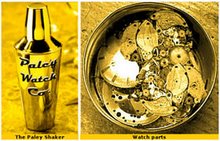 “When the earth formed some 4.6 billion years ago, it was a lifeless, inhospitable place. A billion years later it was teeming with organisms resembling blue-green algae. How did they get there? How, in short, did life begin? This long-standing question continues to generate fascinating conjectures and ingenious experiments, many of which center on the possibility that the advent of self-replicating RNA was a critical milestone on the road to life. “
“When the earth formed some 4.6 billion years ago, it was a lifeless, inhospitable place. A billion years later it was teeming with organisms resembling blue-green algae. How did they get there? How, in short, did life begin? This long-standing question continues to generate fascinating conjectures and ingenious experiments, many of which center on the possibility that the advent of self-replicating RNA was a critical milestone on the road to life. “Leslie Orgel of the research professor at the Salk Institute for Biological Studies in San Diego explains ...
“….all these problems are worrisome, but they do not completely rule out the possibility that RNA was initially synthesized and replicated by relatively uncomplicated processes. Perhaps minerals did indeed catalyze both the synthesis of properly structured nucleotides and their polymerization to a random family of oligonucleotides. Then copying without replication would have produced a pair of complementary strands. If, as Szostak has posited, one of the strands happened to be a ribozyme that could copy its complement and thus duplicate itself, the conditions needed for exponential replication of the two strands would have been established. This scenario is certainly very optimistic, but it could be correct. “
Storyteller: Leslie E. Orgel, senior fellow and research professor at the Salk Institute for Biological Studies in San Diego
http://www.geocities.com/capecanaveral/lab/2948/orgel.html
Story Research: Why is origin of life such a difficult problem?







.jpg)























1 comment:
LOVE IT!
"possibility" x 2
"Perhaps"
"would have" x 2
"If. . . as posited"
"very optimistic, but it could be correct."
"And then the princess kissed the frog and POOF!" (Wait. I can't remember, was that part of the story?)
Amazing. Science, as defined by Darwin, is so powerful! So elegant.
Post a Comment